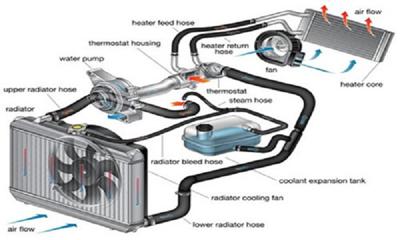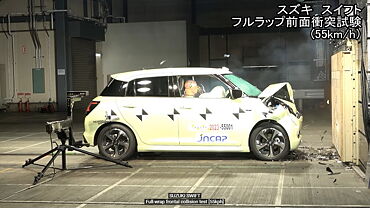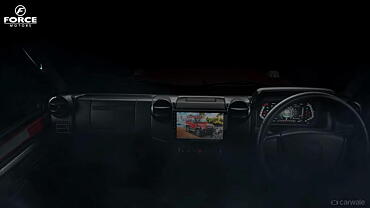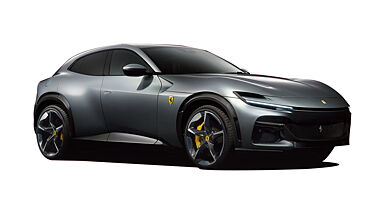A running car engine constantly burns fuel and produces lots of heat from its combustion. While most of the heat is exhaled through the exhaust system, some of it is absorbed into the engine that heats it up. This could damage the engine; therefore, it should be cooled continuously.

A car cooling system, including a coolant liquid mixed with an antifreeze solution, cools the engine by soaking its heat. There are two types of engine cooling systems – liquid cooling and air cooling. This auto guide will provide you basic information about components and functioning of a cooling system.
Major components of a car cooling system
-
Radiator
-
Radiator cap
-
Radiator hoses and clamps
-
Thermostat
-
Cooling fan
-
Water pump
-
Overflow or expansion bottle
-
Water jackets and welsh plugs
How a car cooling system works?
Most modern cars have liquid cooling system that absorbs the engine heat through a coolant liquid. The liquid is usually water mixed with an antifreeze solution that passes through interconnected coolant channels. A water pump draws coolant from the radiator to the engine block by using centrifugal force. Now, we have electrically driven water motors that work more efficiently.
The flowing coolant soaks heat from the engine, before reaching to the thermostat. The thermostat valve measures the coolant temperature and opens to transfer hot coolant to the radiator. The antifreeze solution, flowing in thin radiator tubes, cools when air flows outside the tubes. The air flow, provided by the cooling fans, depends on the speed of the car. It’s the radiator that controls the heat transmission and absorption in the system.
How to prevent engine damage from the cooling system?
A malfunctioning radiator or electric cooling fan can disturb the air flow across the system. Most engine damages or failures are caused due to cooling system malfunctioning. These unnecessary motor damages can be avoided by following few check points.
-
Check the coolant changing schedule in your owner’s manual. If it needs to be changed, ensure that you follow the correct procedure as mentioned in the workshop manual.
-
Always use a right type of coolant. It is usually outlined in the manual or you can take a help of an auto guide.
-
Check the coolant level once a week.



























